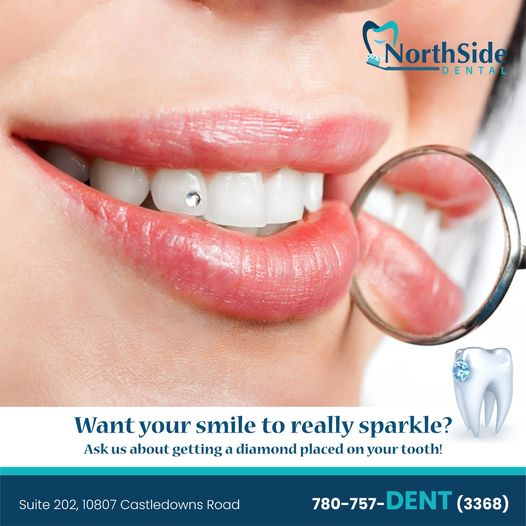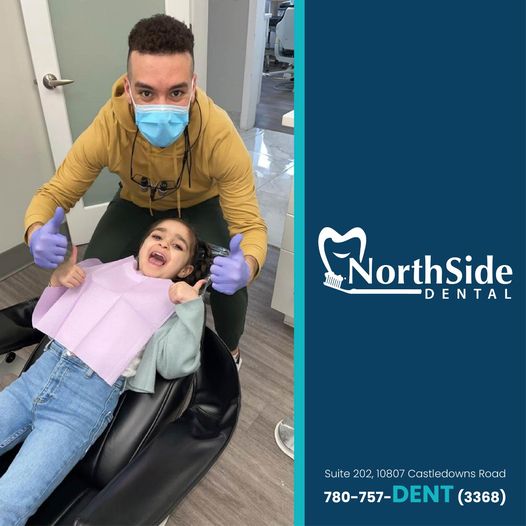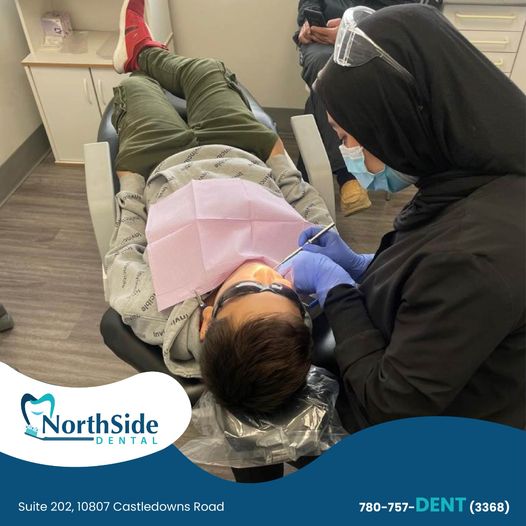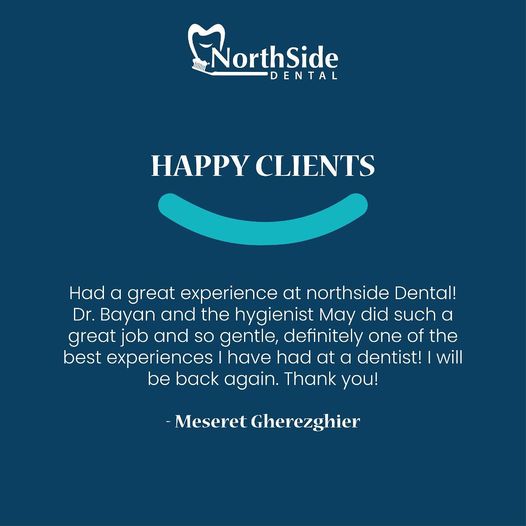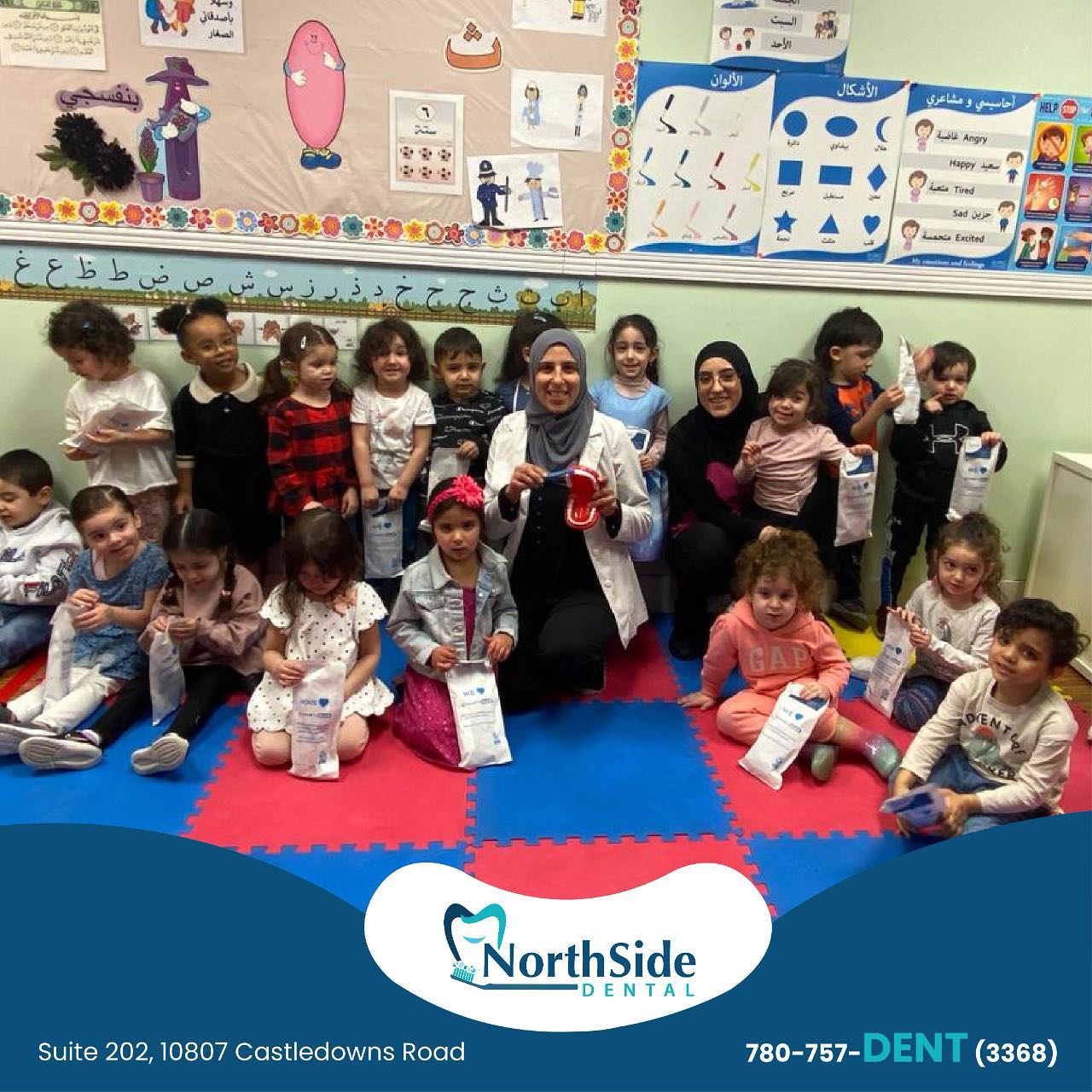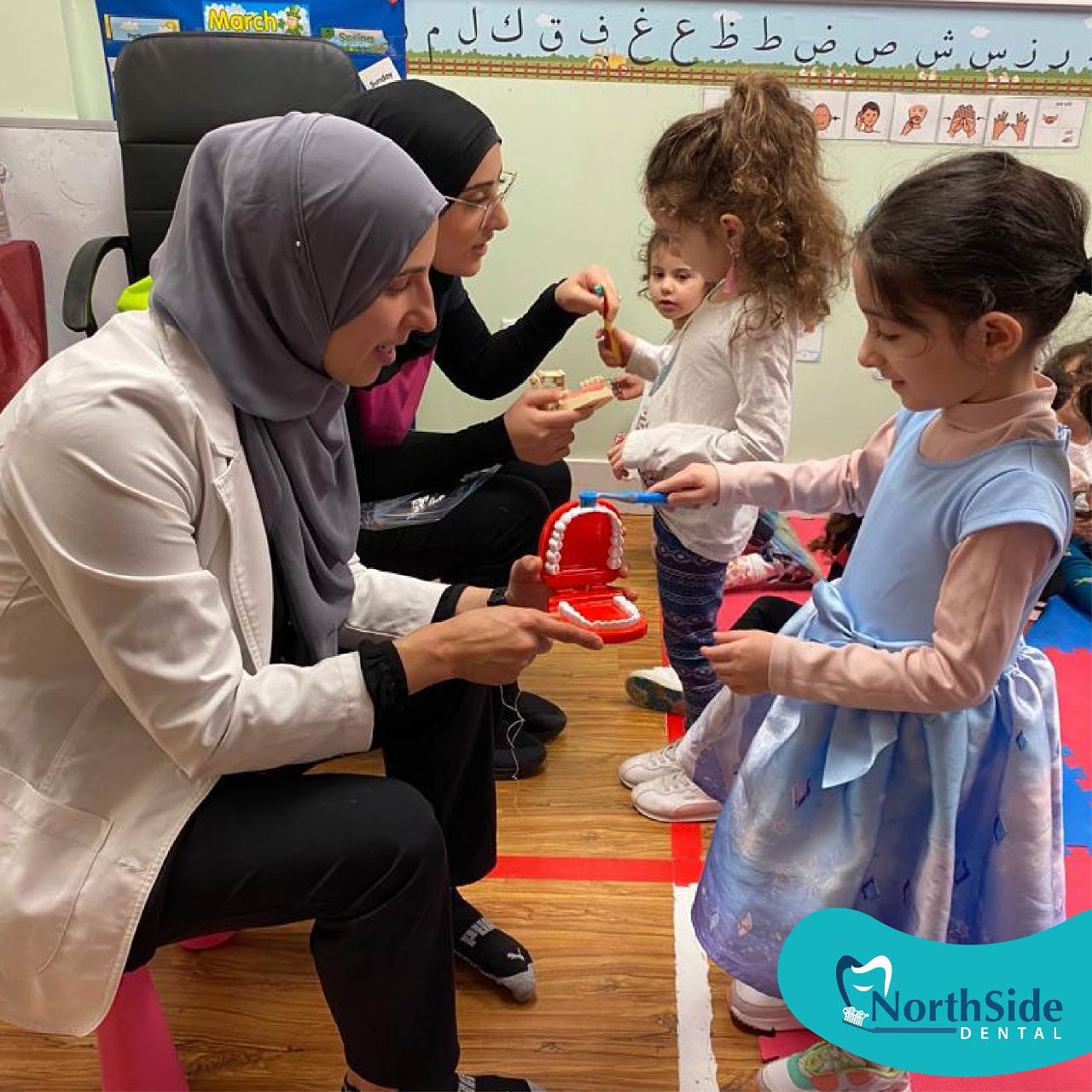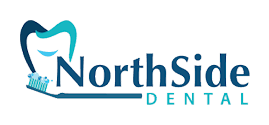At NorthSide Dental, we’re committed to helping you educate your patients on oral health conditions, dental procedures, and proper oral hygiene techniques. Here, you will find an useful information and materials on a variety of topics.
Our goal is to help you and your patients achieve success – in and out of the office.
Introduction
Your teeth can last a lifetime if you practice basic dental care, which involves brushing and flossing regularly, eating a mouth-healthy diet, and visiting your dentist and/or dental hygienist for regular checkups and cleanings. Developing good dental health habits is the best way to prevent tooth decay and gum disease.
How to Brush Your Teeth
When you brush your teeth:
- Brush your teeth 2 times a day, in the morning and at night.
- Use a toothbrush with soft, rounded-end bristles and a head that is small enough to reach all parts of your teeth and mouth. Replace your toothbrush every 3 to 4 months.
- You may also use an electric toothbrush that has the Canadian Dental Association (CDA) seal of approval. Studies show that powered toothbrushes with a rotating and oscillating (back-and-forth) action are more effective than other toothbrushes, including other powered toothbrushes.footnote 1
- Place the brush at a 45-degree angle where the teeth meet the gums. Press firmly, and gently rock the brush back and forth using small circular movements. Do not scrub. Vigorous brushing can make the gums pull away from the teeth and can scratch your tooth enamel.
- Brush all surfaces of the teeth, tongue-side and cheek-side. Pay special attention to the front teeth and all surfaces of the back teeth.
- Brush chewing surfaces vigorously with short back-and-forth strokes.
- Brush your tongue from back to front. Some people put some toothpaste or mouthwash on their toothbrush when they do this. Brushing your tongue helps remove plaque, which can cause bad breath and help bacteria grow. Some toothbrushes now have a specific brush to use for your tongue.
Floss at least once a day. The type of floss you use is not important. Choose the type and flavour you like best. When you floss your teeth, use any of the following methods:
- The finger-wrap method: Cut off a piece of floss 45 cm (18 in.) to 50 cm (20 in.) long. Wrap one end around your left middle finger and the other end around your right middle finger, until your hands are about 5 cm (2 in.) to 8 cm (3 in.) apart.
- The circle method: Use a piece of floss about 30 cm (12 in.) long. Tie the ends together, forming a loop. If the loop is too large, wrap the floss around your fingers to make it smaller.
Gently work the floss between the teeth toward the gums. Curve the floss around each tooth into a U-shape and gently slide it under the gum line. Move the floss firmly up and down several times to scrape off the plaque. Popping the floss in and out between the teeth without scraping will not remove much plaque and can hurt your gums.
A plastic flossing tool makes flossing easier. Child-size flossing tools are available for parents to use to floss their children’s teeth. They are available at most drugstores.
If your gums bleed when you floss, the bleeding should stop as your gums become healthier and tighter next to your teeth.
Current as of: June 30, 2021
Author: Healthwise Staff
Medical Review: E. Gregory Thompson MD – Internal Medicine & Brian D. O’Brien MD – Internal Medicine & Adam Husney MD – Family Medicine & Martin J. Gabica MD – Family Medicine
Introduction
It’s best to start good oral health habits before permanent teeth come in. Some tips on dental care for a child include the following:
- Use a soft cloth to clean your baby’s gums. Start a few days after birth, and do this until the first teeth come in.
- Clean your baby’s first teeth with a soft-bristled baby toothbrush twice a day. If your child is younger than 3 years, use a rice-sized amount of fluoride toothpaste. Use a pea-sized amount for children ages 3 to 6 years. It’s dangerous if your child swallows too much fluoride. Have your child spit out extra toothpaste. Keep all fluoride products, such as toothpastes and mouthwashes, away from your child. Too much fluoride may be toxic and can stain a child’s teeth.
- Flossing is an important part of good dental health. Start flossing your child’s teeth when he or she has teeth that touch each other. Talk with your dentist about the right timing and technique to floss your child’s teeth and to teach your child to floss. Plastic flossing tools may be helpful.
- From time to time, you may want to use disclosing tablets. Disclosing tablets are chewable tablets that colour any plaque that remains after brushing. You can get these tablets at most drugstores.
- If your child age 6 or older has cavities, ask the dentist if your child should try mouthwash. Do not give your child a mouthwash that contains alcohol. The alcohol can be harmful if swallowed.
How to brush your child’s teeth
- Kneel down behind your child and have him or her stand between your knees, facing away from you.
- With one hand, gently press your child’s head against your chest.
- With the other hand, brush his or her teeth. You may also push away the upper and lower lips to make it easier to get to the teeth.
- Pay special attention to where the teeth meet the gums.
Although some children quickly learn to brush their teeth, others do not. If you are having trouble getting your child to brush, try some of the following suggestions.
- My, what big teeth you have! Many children have a favourite stuffed animal or action figure. Use the toy to explain why it is important to brush. Then, have your child brush the toy’s teeth after brushing his or her own teeth.
- Monkey see, monkey do. Brush your teeth together with your child and do it in stages. You can also switch roles and let your child lead the brushing.
- Time is on my side. Use a timer or hourglass. Choose a time that lasts for as long as you feel is necessary. Humming a favourite song while brushing can also keep your child brushing longer.
- Sticks to a card, not your teeth. To reward your child for doing well, make a form that he or she can put a sticker on after brushing. Use a variety of stickers.
You can also involve your child in dental health by letting him or her pick out a toothbrush and toothpaste. Talk to your dentist about the type of toothbrush your child needs, and steer your child in that direction. When choosing a toothpaste, stay clear of tartar-cleaning toothpastes, as they may taste bad or “sting” a young child’s mouth. Ask your child if he or she likes the toothpaste, and change it if this is not the case.
Your child can learn how to brush his or her own teeth at about 3 years of age and should be brushing his or her own teeth morning and night by age 4. Parents should supervise and check for proper cleaning.
By 8 years of age, your child will probably no longer need your help. It is important that your child make brushing a habit, as this limits tooth decay and helps prevent cavities.
Set a good example. Children imitate their parents. If your child sees that you don’t brush, don’t seem to enjoy brushing, or do it too quickly, he or she might well do the same.
Adaptation Date: 3/2/2022
Adapted By: Alberta Health Services
Adaptation Reviewed By: Alberta Health Services
